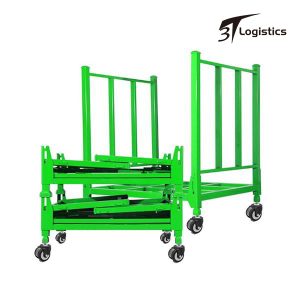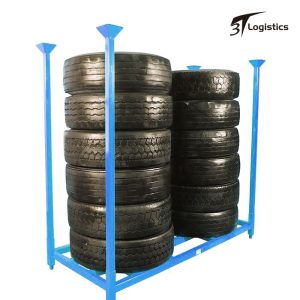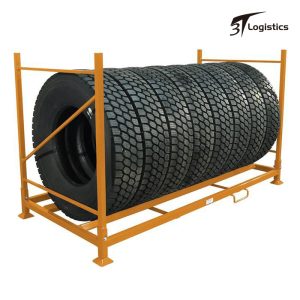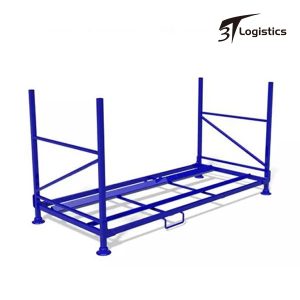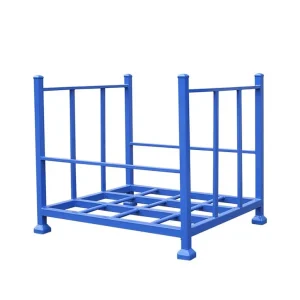CATEGORIES
Your Trustworthy Tire Rack Supplier
Working with our factory directly can often be more cost-effective than sourcing Tire Rack through intermediaries. Direct communication with the factory allows for negotiation of pricing and better control over production costs.
We are a factory that have many years production experience and you can set up the video with us for checking us online, with efficient supply chain management practices can contribute to timely production and delivery of Tire Racks. This is essential for meeting customer demand and maintaining a reliable supply chain.
Why Choose Us
Cost Efficiency
Working directly with a factory can often be more cost-effective than sourcing Tire Rack from intermediaries. You can negotiate pricing, control production costs, and potentially achieve economies of scale.
Lead Times and Timely Delivery
The lead times for manufacturing Tire Rack are important for your supply chain management. A reliable factory will provide realistic production timelines and ensure timely delivery to meet your business needs.
Collaboration and Communication
Effective communication with the factory is crucial to discuss design changes, production updates, and any other factors that may impact the manufacturing process. A collaborative partnership ensures that both parties are aligned on expectations.
After-Sales Support
A factory that provides after-sales support, such as warranty services or assistance with any issues that may arise Tire Rack purchase, adds value to your partnership.
What Is Tire Rack
A Tire Pallet Rack is a storage solution designed specifically for the organized and efficient storage of tires. It provides a secure and accessible way to store tires in various settings, such as automotive service centers, tire shops, warehouses, or garages. Warehouse Tire Racks are designed to maximize space, keep tires in good condition, and facilitate easy retrieval when needed.
Double Sided Tyre Racks play a crucial role in maintaining the condition of tires, preventing damage, and optimizing storage space in automotive-related businesses and facilities. The specific features of a tire rack can vary based on the manufacturer and the intended use.
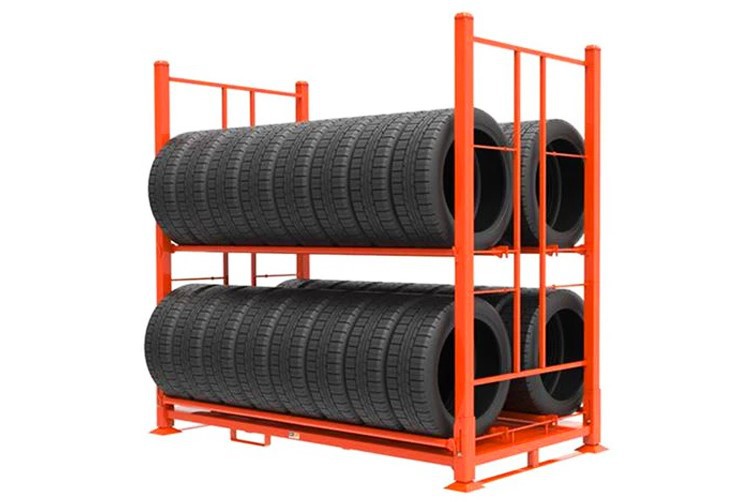
Benifits of Tire Rack
01
Design
Single Sided Tyre Racks are typically designed with horizontal beams or arms that provide support for the tires. The design allows tires to be stacked on the rack without compromising their structural integrity.
02
Open Frame
The frame of a tire rack is often open, allowing for easy visibility and access to the tires. This open design facilitates air circulation, which can be important for preventing moisture buildup and maintaining the condition of the tires.
03
Adjustable
Many Tire Storage Rack have adjustable features, such as adjustable arms or shelves. This flexibility allows the rack to accommodate different tire sizes and quantities, making it a versatile solution for various tire storage needs.
04
Capacity
Tire racks come in different sizes and capacities to handle varying quantities of tires. The capacity of a Heavy Duty Tire Rack is determined by factors such as the width and weight capacity of the horizontal beams or arms.
05
Stackable
Some Steel Pallet Tyre Storage are designed to be stackable, enabling efficient use of vertical space in storage facilities. Stackable tire racks are useful for businesses with a high volume of tire storage needs.
06
Pallet Base (Optional)
Some Storage Tyre Racking have a pallet base or are designed to be placed on pallets. This can be convenient for transporting the entire rack and its contents using a forklift or pallet jack.
Application of Tire Rack
Automotive Service Centers and Garages
Stacking Tire Rack is extensively used in automotive service centers and garages for organized storage of tires. They provide easy access to different tire sizes and types, facilitating efficient tire replacement and maintenance.
Tire Retailers and Dealerships
Tire retailers and dealerships use Stackable Tire Rack to display and store a wide range of tire brands and models. This allows customers to easily browse through available options, and it helps employees manage inventory more efficiently.
Tire Manufacturing Facilities
In tire manufacturing facilities, Tire Racking System is utilized for storing both raw materials and finished products. They contribute to organized storage, easy access during the manufacturing process, and efficient handling of tires.
Warehouse and Distribution Centers
Warehouses and distribution centers that handle tires often use tire racks for efficient storage and retrieval. The open design of the racks enables quick visual identification of tire types and sizes.
Automotive Parts Suppliers
Suppliers of automotive parts and components, including tires, use Tire Rack Storage System to store and transport products within their facilities. Adjustable features in some tire racks accommodate different tire sizes in these settings.
Tire Storage Yards
Large tire storage yards, where bulk quantities of tires are stored, often use stackable tire racks. These racks enable efficient use of space and provide accessibility for moving large volumes of tires.
Types of Tire Rack
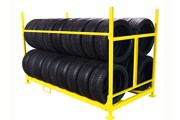
Standard Tire Rack
Standard tire racks are the most common type and consist of horizontal beams or arms supported by vertical posts. These racks allow tires to be stacked horizontally and are suitable for various tire sizes.
Adjustable Tire Rack
Adjustable tire racks feature movable beams or arms, allowing users to adjust the spacing between levels. This adaptability accommodates different tire sizes and quantities, providing flexibility in storage.
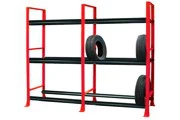
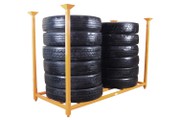
Stackable Tire Rack
Stackable tire racks are designed to be stacked on top of each other, maximizing vertical storage space. They are often used in warehouses and distribution centers to efficiently store large quantities of tires.
Folding Tire Rack
Folding tire racks are designed to be folded when not in use, reducing the amount of space they occupy. This is particularly useful for businesses that require occasional storage or have limited space for Steel pallets for tires storage.
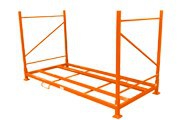
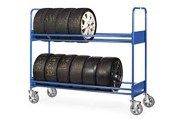
Mobile Tire Rack
Mobile tire racks are equipped with wheels or casters, allowing them to be easily moved within a facility. These racks are beneficial for businesses where the layout may change, or tires need to be transported to different locations.
Wall-Mounted Tire Rack
Wall-mounted tire racks are attached to walls, providing a space-saving solution for garages or workshops with limited floor space. These Warehouse Tire Rack is commonly used in automotive service centers and smaller storage areas.
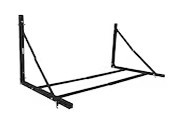
Material of Tire Rack
- Steel is one of the most widely used materials for constructing tire racks due to its strength, durability, and load-bearing capacity. Tire racks made of steel are capable of supporting heavy loads and are resistant to deformation. The type of steel used may include carbon steel or stainless steel.
- Carbon steel is a strong and durable material commonly used in tire rack construction. It provides robust structural support and is often coated or treated to enhance corrosion resistance.
- Stainless steel is chosen for its corrosion resistance, making it suitable for environments where exposure to moisture or corrosive elements is a concern. Stainless steel tire racks are particularly advantageous in applications where rust prevention is a priority.
- Aluminum is valued for its lightweight yet sturdy properties. While less dense than steel, aluminum still provides sufficient strength for tire racks. Aluminum is also corrosion-resistant, making it suitable for environments where moisture or humidity is a factor.
- Galvanized steel is steel that has been coated with a layer of zinc to enhance its corrosion resistance. Galvanized steel tire racks are less prone to rust and can withstand exposure to harsh environmental conditions.
- Powder coating involves applying a dry powder to the surface of steel and then curing it to form a protective and durable finish. Powder-coated steel tire racks are resistant to corrosion, scratches, and chemicals. The powder coating also provides an aesthetically pleasing appearance.
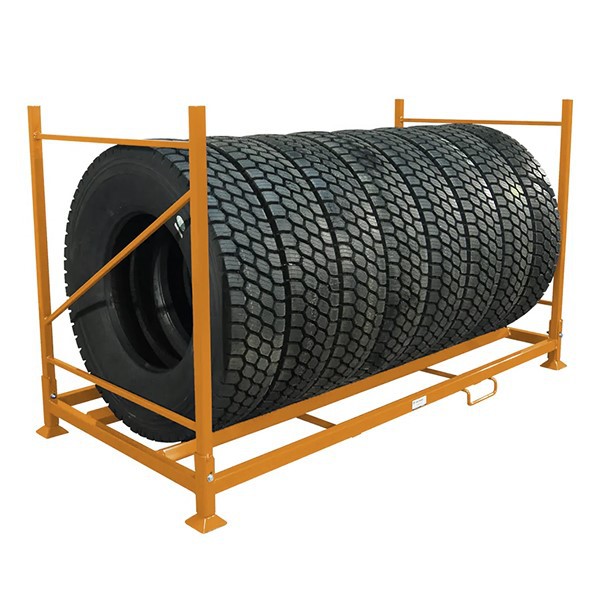
What Parts Of The Tire Rack Have
Frame: The frame is the main structural component of the tire rack. It provides support and stability to the entire system. The frame can be constructed from materials such as steel or aluminum.
Uprights or Vertical Posts: Vertical posts or uprights are vertical components attached to the frame, providing support for the horizontal beams or arms. The height and spacing of these posts can vary based on the design of the rack.
Horizontal Beams or Arms: Horizontal beams or arms extend from the vertical posts, providing a surface for placing and supporting the tires. These beams can be adjustable or fixed, depending on the type of tire rack.
Adjustable Features: Some tire racks have adjustable features, allowing the spacing between horizontal beams to be modified. This adaptability accommodates different tire sizes and quantities.
Wire Mesh Decking: In some tire racks, the horizontal beams may have wire mesh decking, providing a flat and sturdy surface for supporting tires. This design allows for better ventilation and visibility.
Safety Clips or Pins: Safety clips or pins may be used to secure the horizontal beams to the vertical posts, ensuring stability and preventing accidental disassembly.
The versatility and efficiency of Nestable Roll Cage Trolley make them valuable tools in the supply chain and logistics industry, contributing to streamlined processes and improved handling of goods.
How to customized a Tire Rack
Define Requirements
Clearly outline the specific requirements for the tire rack. Consider factors such as the type of tires to be stored, the weight and size of the tires, available storage space, and any specific features required for efficient handling.
Determine Type of Tire Rack
Identify the type of tire rack that best suits your needs. Common types include single-entry racks, double-entry racks, stacking racks, and pallet racks. The choice depends on factors such as tire size, accessibility, and storage space.
Custom Dimensions
Determine the dimensions of the tire rack based on the size and quantity of tires to be stored. Consider the diameter, width, and overall dimensions of the tires, as well as any space constraints in the storage area.
Adjustable Features
Opt for adjustable features in the tire rack, such as adjustable arms or beams. This allows for flexibility in accommodating different tire sizes and quantities, providing versatility in storage.
Custom Materials
Choose materials for the frame and components based on the environmental conditions of the storage area. Common materials include steel or aluminum. Consider coatings or finishes that enhance durability and resistance to corrosion.
Specialized Coatings
Depending on the application, consider specialized coatings or finishes for the tire rack. For example, coatings that provide additional grip or cushioning to protect tire sidewalls.
how to maintain Tire Rack
- Regular Inspections:
Conduct routine visual inspections of the tire rack. Look for signs of damage, corrosion, or any structural issues. Regular inspections help identify potential problems early on.
- Clean the Rack:
Keep the tire rack clean from dust, debris, and contaminants. Regular cleaning helps prevent the accumulation of materials that could potentially damage tires or affect the rack’s stability.
- Check for Corrosion:
If the tire rack is made of metal, check for signs of corrosion, especially in areas prone to rust. Address any rust spots promptly by cleaning and applying appropriate anti-corrosion treatments or coatings.
- Tighten Loose Fasteners:
Periodically check and tighten any loose bolts, nuts, or fasteners on the tire rack. Loose components can compromise the stability and load-bearing capacity of the rack.
- Verify Weight Capacities:
Confirm that the weight capacities specified for the tire rack are not exceeded. Overloading the rack can lead to structural damage and compromise safety.
- Check for Bent or Damaged Components:
Inspect horizontal beams, vertical posts, and other structural components for any signs of bending, warping, or damage. Replace or repair any compromised components to maintain the integrity of the rack.


